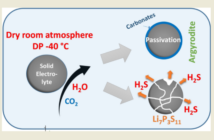Tech Explore confirmed a new breakthrough that slipped through our net a month ago. We found it so intriguing we decided to address our oversight right way. The secret sauce that brings zinc metal anode efficiency to almost 100% is a new electrolyte. And from what we hear this could elevate zinc metal battery efficiency to a level on par with lithium-ion.
New Electrolyte Coating Boosts Zinc Metal Anode Efficiency
The research by scientists at Oregon State University is part of a larger drive to develop next generation storage for renewable energy. The study group claim their discovery represents significant progress towards making zinc metal batteries more accessible to the market, including for wind farms.
However, until now zinc batteries have fallen at the first hurdle, because of the low number of charging cycles the technology can tolerate. This is in turn caused by permanent semi-plating with zinc ions at the anode that does not reverse out. Lithium-ion batteries do not have this shortfall, and boast up to 99% coulombic efficiency.
New Progress Made by Oregon State University Team
Zinc metal batteries have long been seen as a potential alternative to more expensive lithium ion ones. That’s because the material is abundant, non-toxic and not susceptible to fires. The Oregon State University breakthrough involves a new hybrid electrolyte which counters the generation of hydrogen gas.
This electrolyte uses water and a common battery solvent involving inexpensive chloride salts, thereby radically increasing zinc metal anode efficiency. We understand this restricts the water’s ability to generate the gas by forming a passivation layer on the anode.
This puts zinc metal batteries in the same ball park as lithium-ion ones, in terms of coulombic efficiency. “The breakthrough reported here heralds the near-future commercialization of zinc metal batteries for large-scale, sustainable grid storage.” So says the study team leader, who adds that a similar passivation layer was the original springboard for lithium-ion.
More Information
Making Electric Car Batteries Easier to Recycle




